Xidong Pi
Estimating multi-class dynamic origin-destination demand through a forward-backward algorithm on computational graphs
Mar 12, 2019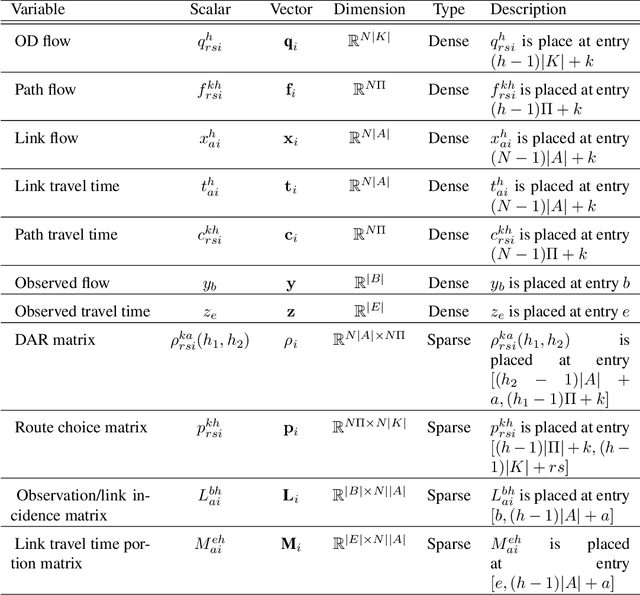
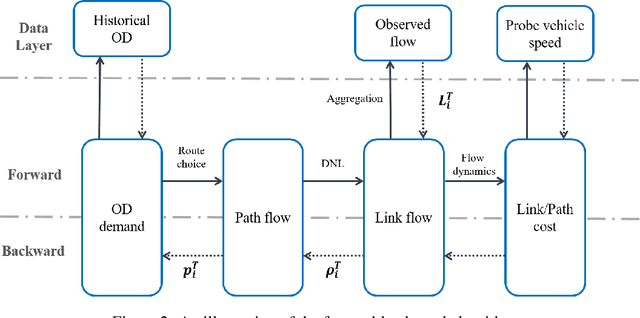
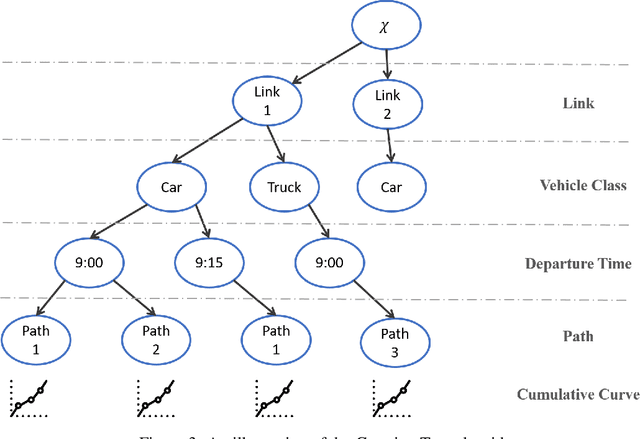
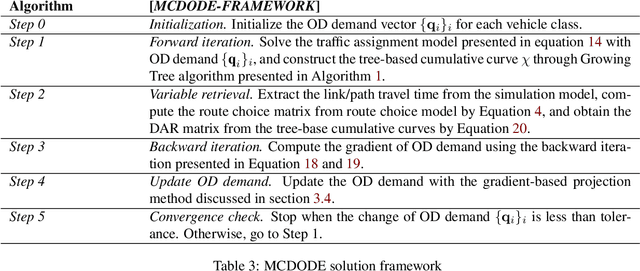
Abstract:Transportation networks are unprecedentedly complex with heterogeneous vehicular flow. Conventionally, vehicle classes are considered by vehicle classifications (such as standard passenger cars and trucks). However, vehicle flow heterogeneity stems from many other aspects in general, e.g., ride-sourcing vehicles versus personal vehicles, human driven vehicles versus connected and automated vehicles. Provided with some observations of vehicular flow for each class in a large-scale transportation network, how to estimate the multi-class spatio-temporal vehicular flow, in terms of time-varying Origin-Destination (OD) demand and path/link flow, remains a big challenge. This paper presents a solution framework for multi-class dynamic OD demand estimation (MCDODE) in large-scale networks. The proposed framework is built on a computational graph with tensor representations of spatio-temporal flow and all intermediate features involved in the MCDODE formulation. A forward-backward algorithm is proposed to efficiently solve the MCDODE formulation on computational graphs. In addition, we propose a novel concept of tree-based cumulative curves to estimate the gradient of OD demand. A Growing Tree algorithm is developed to construct tree-based cumulative curves. The proposed framework is examined on a small network as well as a real-world large-scale network. The experiment results indicate that the proposed framework is compelling, satisfactory and computationally plausible.
A deep learning approach to real-time parking occupancy prediction in spatio-termporal networks incorporating multiple spatio-temporal data sources
Jan 28, 2019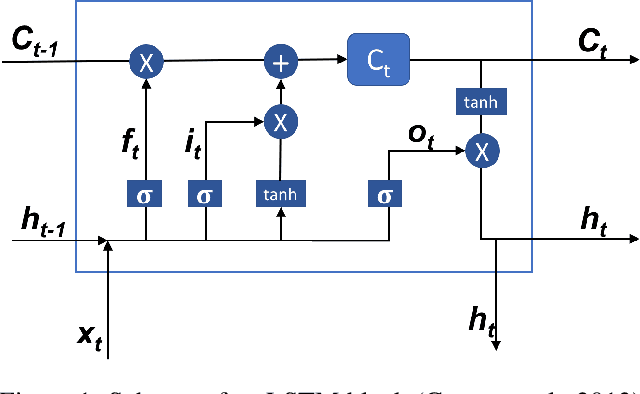
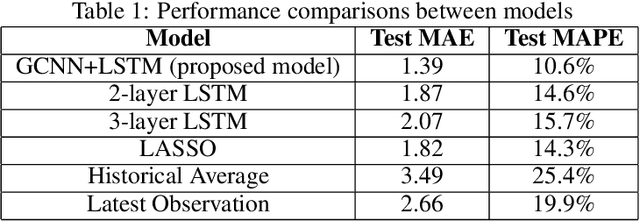
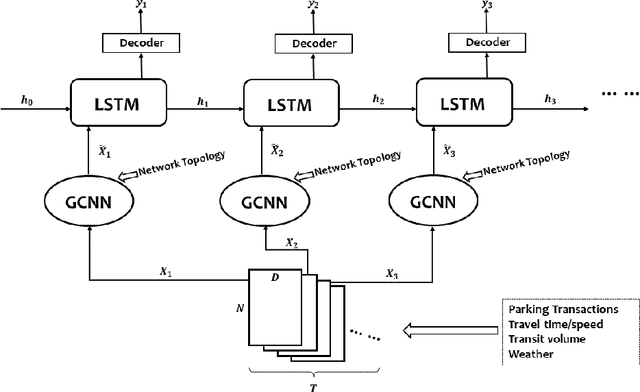

Abstract:A deep learning model is proposed for predicting block-level parking occupancy in real time. The model leverages Graph-Convolutional Neural Networks (GCNN) to extract the spatial relations of traffic flow in large-scale networks, and utilizes Recurrent Neural Networks (RNN) with Long-Short Term Memory (LSTM) to capture the temporal features. In addition, the model is capable of taking multiple heterogeneously structured traffic data sources as input, such as parking meter transactions, traffic speed, and weather conditions. The model performance is evaluated through a case study in Pittsburgh downtown area. The proposed model outperforms other baseline methods including multi-layer LSTM and Lasso with an average testing MAPE of 12.0\% when predicting block-level parking occupancies 30 minutes in advance. The case study also shows that, in generally, the prediction model works better for business areas than for recreational locations. We found that incorporating traffic speed and weather information can significantly improve the prediction performance. Weather data is particularly useful for improving predicting accuracy in recreational areas.
 Add to Chrome
Add to Chrome Add to Firefox
Add to Firefox Add to Edge
Add to Edge